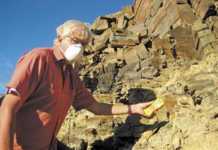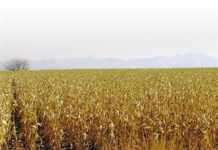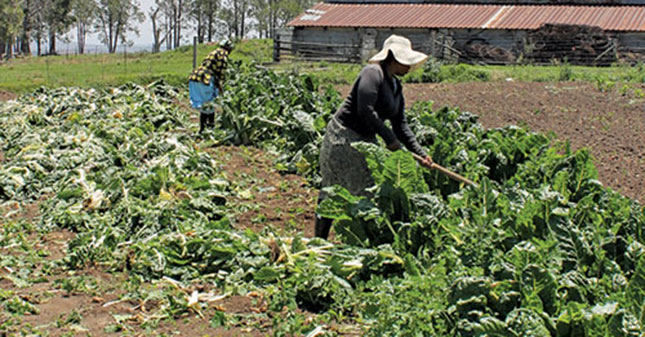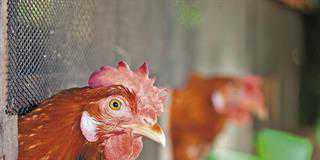
Photo: FW Archive
Tell us more about WRSA’s philosophy pertaining to land reform and transformation.
No wealth is distributed to black South Africans with present land reform policies. The way in which land reform is currently implemented is demolishing wealth creation. What is needed is an innovative approach to vibrant, equitable and sustainable businesses. Since the adoption of its transformation policy towards the end of 2012, the WRSA has supported an approach that makes economic sense.
READ:Grain SA rejects land reform without compensation
The WRSA inputs include exchanging ideas on land reform and rural development policy and strategy, providing development information on wildlife ranching for beginner ranchers, and specialist knowledge support services, particularly for the planning for wildlife ranching. The organisation has regularly reiterated its willingness to support the Office of the National Planning Commission on the positioning of the green economy approach.
Government should start by giving ownership of land to black South Africans through title deeds as this is how wealth is generated and carried over from one generation to the next. White South Africans have built up their demographic dividend by collecting assets, not through savings. The same should be strived for in new approaches. The government seemingly discourages private ownership on a statutory level and thus robs black entrepreneurs of an opportunity to accumulate wealth.
Please explain WRSA’s proposed land reform and transformation model.
The model provides for accelerated land reform. It proposes pro-actively addressing the continued transformation in the wildlife farming sector and increase the contribution of government, commercial, emerging and small-scale farmers, foreign investors and producers in the wildlife farming industry. It is also committed to contributing to the promotion of economic development and growth in the wildlife ranching sector.
The model is based on the following:
- Success in the free market economy is dependent on understanding and participating in the risk-and-reward principles. Beneficiaries need to be actively involved and achieve full ownership of their land and wildlife-related businesses in order to become the future stars of the wildlife industry.
- A mutually beneficial situation should be created for both the beneficiaries and the commercial game ranchers who willingly participate and risk time, effort and money to assist, mentor and transfer skills to emerging participants.
- An enabling policy environment that promotes the sustainable use of natural resources for the socio-economic benefit of our people should be facilitated by all relevant government departments.
This requires members to identify previously disadvantaged individuals and engage in a joint partnership. The beneficiaries must have a dedicated work ethic and a wish to become full-time game ranchers. The partnership should provide for a black economic empowerment management company (BEEMC) and a workers’ trust for land restitution purposes.
Shares in this private company are allocated in proportion to land and other assets that may be acquired and made available to the partnership. Provision is also made for outside investors. Shares owned by WRSA members may eventually be made available for sale to beneficiaries once their competence in running the business is proven.
Alternatively, the company or shares may be sold on the open market. The land contributed is leased to the BEEMC, which pays an agreed rental to land owners. Moveable assets are owned by the BEEMC, while assets owned by either the commercial farmer or beneficiaries are used as security for development and production loans.
How will the financing of the model work?
An institution needs to be identified by government to provide funding for land reform. It is proposed that the Land Bank fulfils this role. The bank should be responsible for providing finances for the purchase of land, capital development and production loans. The financing of the purchase of farms or wildlife-related businesses could be done through the Land Bank on a 50/50-funding model.
This means a 50% grant for the beneficiaries and a 50% loan portion payable by the commercial partner at an interest rate of about 2,5%, payable over 40 years. WRSA feels strongly about business incentives to encourage commercial wildlife ranchers to participate in the process. The proposed incentives include tax exemption for the joint venture BEE company. The participants should also be exempted from future land claims, and released from any restitution responsibilities for the future. They should also be credited with BEE Level 1 benefits.
How far is the WRSA from implementing the model?
Two pilot projects, both in the Waterberg area of Limpopo, are at an advanced stage of planning and negotiation. Land reform beneficiaries have obtained farms in terms of the Land Redistribution for Agricultural Development (LRAD) programme. They have shown interest in joining forces with successful neighbouring game farmers.
Limpopo’s Department of Economic Development, Environment and Tourism’s (LEDET) nature reserves and parks produce wildlife at an increasing rate, thus necessitating annual reductions to keep the population of animals in equilibrium with the food supply. So it makes sense for LEDET to capacitate the properties of black farmers, which are currently bare. WRSA plans to start with the roll-out of the first projects in January 2015.
You are on record as saying it would be immoral not to include a workers’ trust in the model. Why?
To quote the Minister of Rural Development and Land Reform, Gugile Nkwinti, “It cannot be that the workers will work forever and at the end of their time on earth, have nothing to show for it. It is not right, it just cannot be right”. The WRSA’s sentiment in this regard is based on a distinction between right and wrong or good and bad behaviour.
Land reform is a moral issue. To what extent does the WRSA adhere to the requirements of the National Development Plan?
The WRSA transformation paradigm is in line with government’s policy to facilitate a comprehensive and structural transformation in the agriculture economy. This is in order to achieve a united and prosperous agricultural sector in partnership with all stakeholders. It is also in line with the Constitution and Bill of Rights to promote equality through enactment of legislation and other measures which were designed to protect and advance persons, or categories of persons previously disadvantaged, by unfair discrimination.
It is part of the NDP’s strategic objectives to enhance equitable access and participation, improve global competitiveness and profitability, and ensure sustainable resources management. The government’s land reform programme has three main sub programmes – restitution, redistribution and tenure. It has, as a strategic objective, the transformation of the apartheid land regime to create an enabling environment for political, social and economic empowerment of historically disadvantaged individuals.
Phone Jacobus du Toit on 082 450 8454 or email [email protected].
This article was originally published in the 24 October 2014 issue of Farmer’s Weekly.













